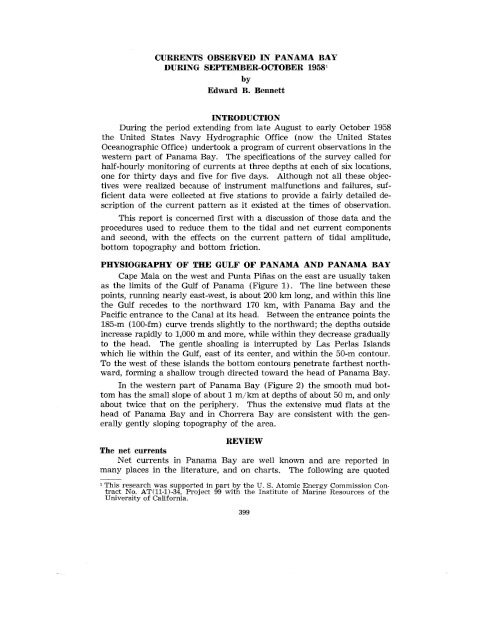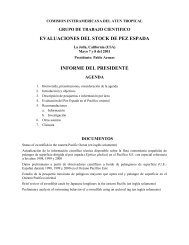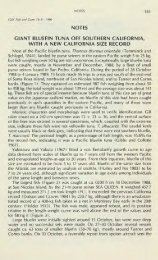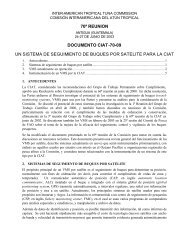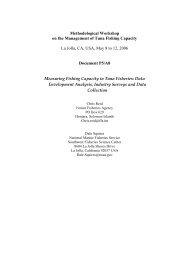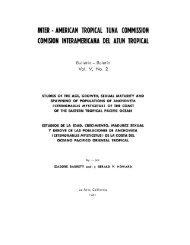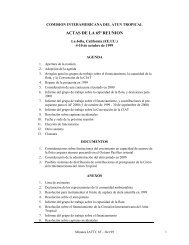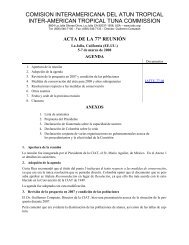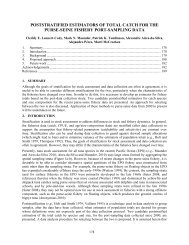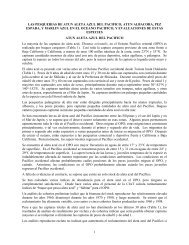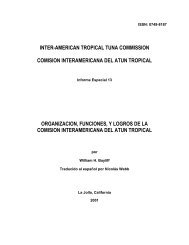t - Comisión Interamericana del Atún Tropical
t - Comisión Interamericana del Atún Tropical
t - Comisión Interamericana del Atún Tropical
- No tags were found...
Create successful ePaper yourself
Turn your PDF publications into a flip-book with our unique Google optimized e-Paper software.
CURRENTS OBSE,RVED IN PANAMA BAYDURING SEPTEMBER-OCT'OBER 1958 1byEdward B. Bel1nettINTRODUCTIONDuring the period extending from late August to early October 1958the United States Navy Hydrographic Office (now the United StatesOceanographic Office) undertook a program of current observations in thewestern part of Panama Bay. The specifications of the survey called forhalf-hourly monitoring of currents at three depths at each of six locations,one for thirty days and five for five days. Although not all these objectiveswere realized because of instrument malfunctions and faHures, sufficientdata were collected at five stations to provide a fairly detailed descriptionof the current pattern as it existed at the times of observation.This report is concerned first with a discussion of those data and theprocedures used to reduce them to the tidal and net current componentsand second, with the effects on the current pattern of tidal amplitude,bottom topography and bottom friction.PHYSIOGRAPHY OF THE GULF OF PANAMA AND PANAMA BAYCape Mala on the west and Punta Piñas on the east are usually takenas the limits of the Gulf of Panama (Figure 1). T;he line between thesepoints, rllnning nearly east-west, is about 200 km long, and within this linethe Glllf recedes to the northward 170 km, with Panama Bay and thePacific entrance to the Canal at its head. Between the entrance points the185-m (100-fm) curve trends slightly to the northward; the depths outsideincrease rapidly to 1,000 m and more, while within they decrease graduallyto the head. The gentle shoaling is interrupted by Las Perlas Islandswhich lie within the Gulf, east of its center, and within the 50-m contour.To the west of these islands the bottom contours penetrate farthest northward,forming a shallow trough directed toward the head of Panama Bay.In the western part of Panama Bay (Figure 2) the smooth mud bottomhas the small slope of about 1 m/km at depths of about 50 m, and onlyabout twice that on the periphery. Thus the extensive mud flats at thehead of Panama Bay and in Chorrera Bay are consistent with the generallygently sloping topography of the area.REVIEWThe net currentsNet currents in Panama Bay are well known and are reported inmany places in the literature, and on charts. The following are quoted1 This research was supported in part by the U. S. Atomic Energy Commission ContractNo. AT(11-1)-34, Project 99 with the Institute of Marine Resourees of theUniversity of California.399


